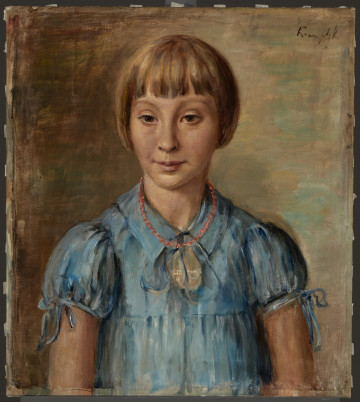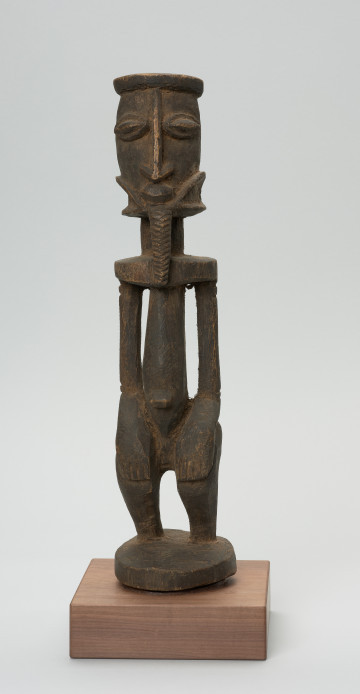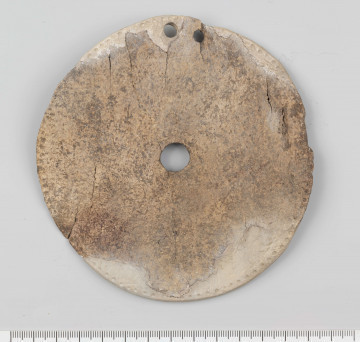
A portrait of Joanna Kramsztykówna
ca 1933
Museum of the history of Polish Jews
Roman Kramsztyk (1885–1942) studied drawing and painting in the early 20th century under well-known artists of the time: Zofia Stankiewicz, Adolf Edward Herstein and Miłosz Kotarbiński. Between 1903 and 1904, he studied at the Academy of Fine Arts in Kraków under Józef Mehoffer, then at the Academy of Fine Arts in Munich under Ludwig Herterich (1904–1908). From 1909, he lived in Paris (with interruptions, as he spent the years 1915–1924 in Warsaw), where he was included in the international group of artists whose art is referred to as “Ecole de Paris”; he participated in Polish and French artistic life and was, inter alia, a co-founder of the Rytm Polish Artists’ Society (Polish: Towarzystwo Artystów Polskich Rytm) (1922).
Kramsztyk's work was consistent, in his painting endeavours he focused on form, composition and the question of colour; he never departed from a realistic view of the world. The painter never lost sight of the visual and chromatic values of the painting. Drawing abundantly from the old and modern artistic tradition, he created his own, recognisable style, giving his works a personal tone.
The outbreak of World War II found Kramsztyk in Poland. When the Germans closed the Warsaw ghetto on 15 November 1940, the painter was among the nearly 400,000 Jews who found themselves behind the walls that divided the city. The Jewish world surrounding him in the ghetto was alien to him, he did not know Yiddish, which was most often spoken in the streets, and the fact that he was Christian made him an apostate in the eyes of most fellow inmates. However, Kramsztyk refused to hide on the “Aryan side” and decided to stay in the ghetto. His drawings saved from the Jewish quarter (incl. Old Jew with Children, ŻIH Jewish Historical Institute) are a harrowing document which records the ultimate experience of the Holocaust, the fate of Polish Jews: poverty, hunger, death. Kramsztyk was shot on 6 August 1942 during the so-called Great Action: deportation of Jews to the Nazi German extermination camp in Treblinka.
Renata Piątkowska
Znaleziono 4 obiektów

National Museum in Lublin

między 1951 — 2000
National Museum in Szczecin

National Museum in Lublin
DISCOVER this TOPIC
Museum of King Jan III's Palace at Wilanów
DISCOVER this PATH
Educational path